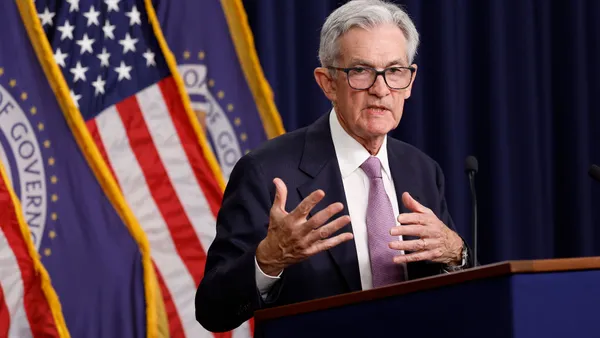Dive Brief:
- March's Dodge Momentum Index surged upward 6.1% to a reading of 155, up from February's downward-revised figure of 146, according to Dodge Data & Analytics.
- Month-over-month commercial activity rebounded 9.6% in March, making up for the 5.1% contraction in the category last month. Institutional momentum was up 1.6%, although it fell short of its 8.1% February surge. Six nonresidential projects valued at $100 million or more entered the planning stages in March, including a $179 million government office in Ashburn, Virginia; a $155 million warehouse in Riverside, California; a $210 million outpatient medical center in Torrance, California, and a $105 million federal courthouse in Columbia, South Carolina.
- Dodge said planning activity dramatically increased in 2017's last quarter, noting that the late-year push was still evident in Q1 2018. According to Dodge, planning momentum could be getting a boost from the $1.5 trillion tax overhaul passed at the end of last year.
Dive Insight:
The tax law, aside from offering up incentives like a lower corporate tax and a pass-through entity tax deduction to U.S. companies overall, also provided impactful breaks to construction industry-related businesses. Although contested in the run-up to the vote, the bill included wind and electric credits, tax-exempt bond financing of sports venues and private activity bonds (PABs), which comprise up to 20% of the municipal bond market.
What remains to be seen is what kind of progress the president's $1.5 trillion infrastructure bill will make this year. The White House unveiled the long-awaited plan after President Donald Trump's State of the Union address in January, but one big question remains — how to pay for it.
States and local governments will do the bulk of the financial heavy lifting and will be able to request a share of $200 billion — the federal government's direct spend — but there is no indication that Congress and the administration have reached a consensus on where that money will come from.
Last month, House Majority Leader Paul Ryan (R-Wis.) said he favored dividing the president's plan into five or six bills, focusing on last month's Federal Aviation Administration reauthorization and omnibus spending bill first. Democrats have suggested paying for a refashioned $1 trillion infrastructure program by rolling back certain provisions of the existing tax reform bill.













